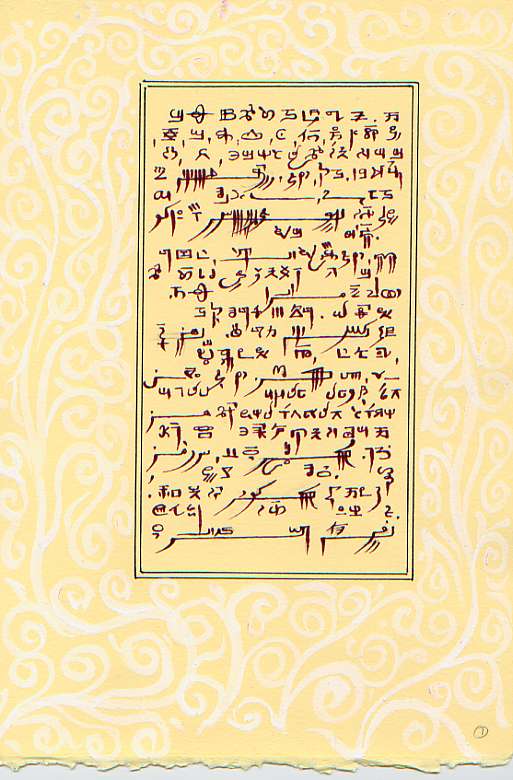     |
You are now on page 8. As explained at the end of page 7, this is the beginning of the story "The Piano Competition" as it would appear in a Tapisreal text. The previous pages showed you the vocabulary a word at a time, but gave no indication of how Tapissary looks in its actual usage.
On the next pages you will see the entire story again written properly. No text has an exact look, however. On a slightly wider page space, for instance, the number of characters for each line would increase. The result of course, is that what is backwards and what is forwards will change. On this page, the first line carries 10 celloglyphs. Imagine if the number on a wider page would allow for 15 celloglyphs per line. The mechanics quite simply dictate that a major alteration will occur to the look of the text. As a matter of fact, unless you're scientifically accurate, no copy of a text will resemble its parent exactly. If you're wondering why I'm focusing so much on this little point, the reason is that Tapissary is a visual language. Not only are you dealing with pictures (celloglyphs), but the shape of the body of the text is also worth considering. I like writing on small pages (like the one at right), because it gives the text some dynamic movement, where no page is quite like another. Tapissary is not meant to look homogenous. I have developed the look over the years using Japanese as an inspiration. If you are familiar with the writing system in Japanese... or better yet, if you're not, just follow along a line at a moderate pace and notice how the liquid flow of many characters (hiragana) are rythmically arrested by their architecturally elaborate neighbors. The variation of shapes and movement fascinate me in Japanese.
.......................................
.......................................
|
|
 |
 |
